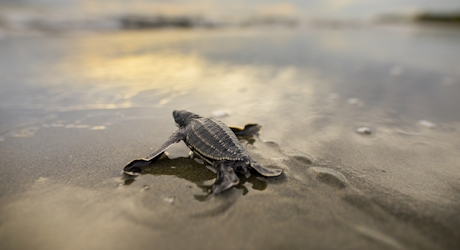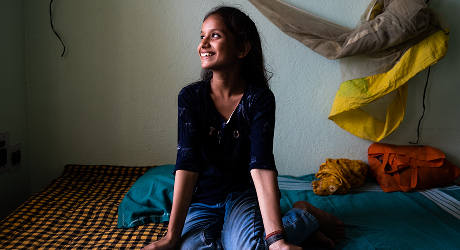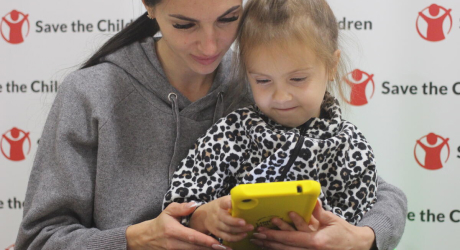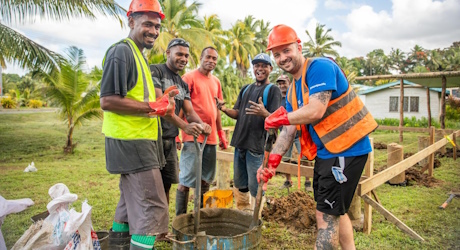Footprints Project
Since 2005, travelers like you have helped us change the world through micro-donations.
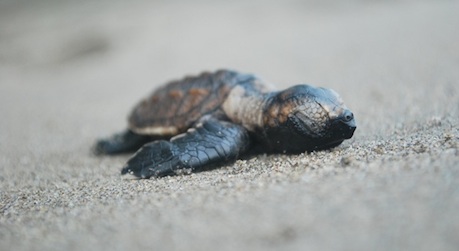
-
A total of
2180
Travelers
-
donated
$5000.25
(100% funded) -
to help improve
Environment
-
impacting
75
people -
in
El Salvador
The primary aim of this project is to ensure the long-term protection of critically endangered hawksbill sea turtles in Jiquilisco Bay, El Salvador, and ultimately recover the population.
This funding from the Footprints Network partners was used for the 2013 nesting season (beginning May 2013 and ending Oct 2013). This report includes activities though the end of August 2013.

The project has been a major success with the following activities conducted.
Nest protection
117 Nightly beach patrols to document hawksbill nesting and protect nests at Bahía Jiquilisco in El Salvador, were conducted. These night patrols included shifts from 18:00-23:00 and from 23:00-04:00.
Two large hatcheries measuring 10m x 10m, with a capacity of 200 nests each, were constructed prior to the start of the season. The hatcheries were located on the San Juan del Gozo Peninsula at Punta San Juan and on the outskirts of the community of La Pirraya on Isla San Sebastian (Red dots in Figure 1). Las Isletas beach has served as a refuge to house and protect all in-situ nests.
A total of 164 successful hawksbill nesting events have been recorded thus far during the 2013 nesting season at Bahía Jiquilisco.
Of the 164 nests recorded at the site, 14 (8.5%) were protected in-situ (i.e. natural environment), 145 (88.4%) were protected in the program hatchery and only 5 (3%) were poached.
The overall protection rate of endangered hawksbill turtle eggs was 97%!
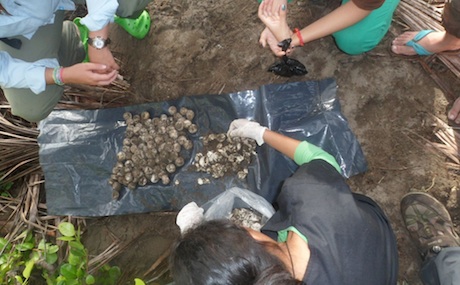
Photo: A volunteer collecting and counting eggs
The Egg Hatchery
30,699 eggs were kept in the 145 nests protected in the hatchery.
Of those eggs, 14,661 have hatched, leading to the production of 9,858 hatchlings and a hatching success rate of 67.2%.
Hawksbill eggs require approximately 60 days to develop and hatch and thus a large percentage of the nests have still not hatched.
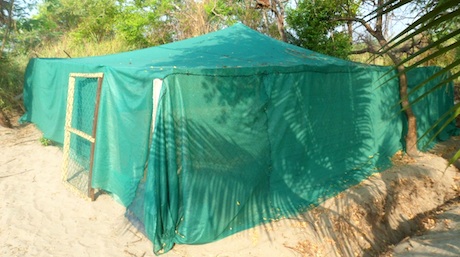
Photo: The Hatchery

Photo: Inside the Hatchery, showing each space marked out for a nest (200 spaces in total)
Turtle monitoring
A total of 49 individual hawksbill turtles were tagged while nesting Bahía Jiquilisco, all of which were first time nesters. Intense tagging only began in Bahía Jiquilisco in 2012 and considering the species nests every 2-3 years, we expect re-nesters from previous seasons to begin returning in the upcoming 2014 season.
All new turtles were tagged with either Inconel tags or PIT (Passive Integrative Transponder) tags or both.
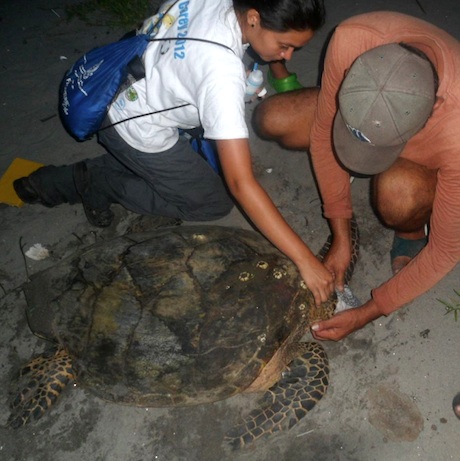
Photo: Collecting data from a nesting Hawksbill Turtle
Local employment and the incentive program:
Eight local program staff members were hired during the 2013 season to manage all on-site research and conservation activities in Bahía Jiquilisco. These represent critical employment opportunities in the program area, where jobs are extremely hard to come by.
In addition to direct employment, an average of 26 local heads-of-households have participated in the incentive program each month, providing much needed revenue to families in the program area.
International participant/volunteer program.
Responsible ecotourism or ‘volunteerism’ with conservation efforts via participant programs has benefited numerous sea turtle programs across the world. This sort of tourism offers an adventure for the participant, it also expands the profitable travel industry to developing countries/areas, where jobs are often scarce.
We developed three different types of tourism during the 2013 season, including:
- International volunteers: from one week to the entire season with the hawksbill conservation program.
- Short-term tourists: typically groups of 5+ people who tour the area for only two to three days, partaking in project activities and other tourism opportunities.
- Community-based rural tourism: tourists that visit the program areas for only one day and take part in turtle conservation activities and/or other tourism activities in the vicinity.
We hosted a total of seven International Volunteers, generating critical funding for both the project and the community, and also recruited two long-term Volunteer Coordinator Assistants.
To improve the Tour Guiding capability of locals, we developed a 3 day workshop that also provided official certification to guides.
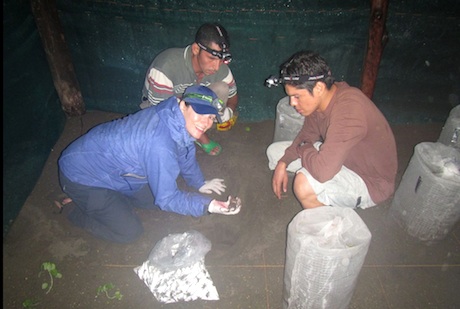
Photo: Volunteers planting hawskbill eggs in the hatchery for safe keeping
“Thank you, thank you, thank you for an amazing time working with ICAPO! It was an incredible experience, not to be forgotten. I so appreciate the work each of you do and thank you for the opportunity to work side-by-side with you to save our beloved hawksbills. I look forward to hearing how "my" nest (S2) and all my little hatchlings do in the months to come”. Deborah Goldstein (SEE Turtles & ICAPO international volunteer)
"The Hawksbill Cup"
The Soccer World Cup is an unrivalled cultural phenomenon in Latin America and the "Hawksbill Regional Cup" seeks to emulate this. The hawksbill nesting season represents the “final match” between the program team in Bahía Jiquilisco and the team of our sister program in Nicaragua.
Each team competes to score more “hawksbill conservation points” (e.g., highest percentage of nests protected, greatest hatching success, etc.), using “careymetros” (hawksbill-shaped measurement gauges), which are located at hatcheries and are updated monthly.
Team t-shirts for each site were given to egg collectors that participated in the competition.
What's next for this project
Ongoing observations and data collection of nesting females will likely continue through mid-September,
Nest protection and hatchling recruitment will likely occur through the end of October, as nesting incubating in the hatchery typically need 45-60 to hatch.
The hawksbill festival will be held in Bahía Jiquilisco in late October and will include activities such as the ‘Miss Hawksbill’ competition, cultural events, local and national musical performances, games, face painting, marine turtle informational kiosks, a gastronomical fair and other activities. We will also hand out awards to local leaders and participants for their collaborative efforts with the project.
A “closing” meeting to share the final results of the project, including the winner of the Hawksbill Cup, with community members will be held in late November.
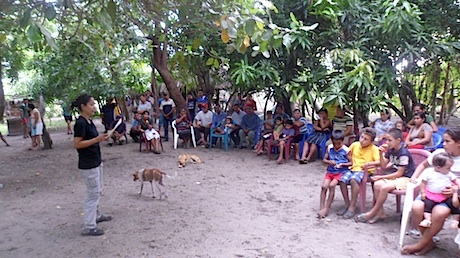
Photo: A community meeting to discuss the protection strategy for the Hawksbill Turtles
Can I visit this project?
Yes, You can join this program as a Turtle Conservation volunteer in Bahía Jiquilisco. More details
Traveling soon? When you buy travel insurance with us, you can make a contribution towards a cause you care about.
Get a quote